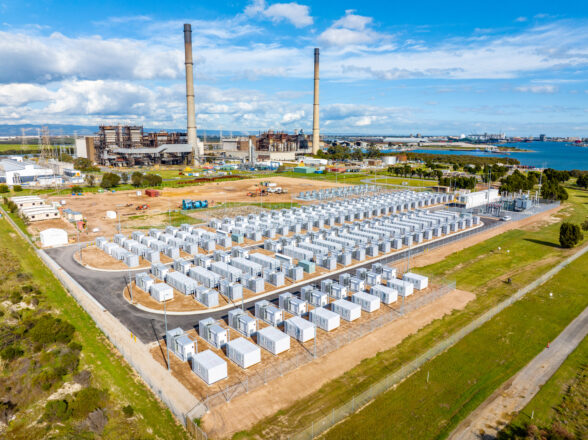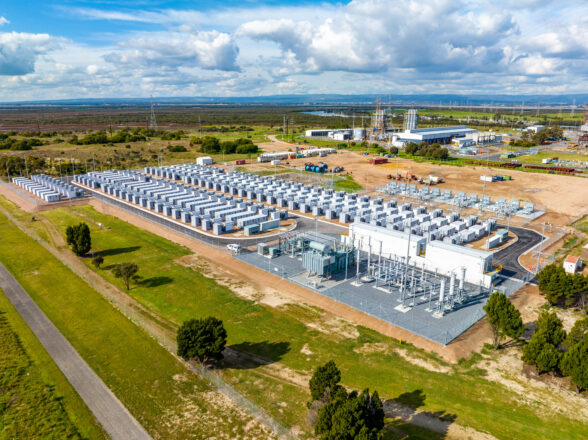Project Spotlight
AGL Energy
250 MW / 250 MWh
Balancing renewables in South Australia

Bringing South Australia one major step closer to a 100% renewable energy grid
Ensuring reliability in a renewable-driven power system
South Australia has a unique opportunity to swiftly decarbonise and transition to full renewable integration with its unparalleled renewable energy sources. Flexible capacity is vital for the state to reach its 100% renewable energy target by 2030, supporting Australia’s net-zero emissions target by 2050.
Wärtsilä’s 250 MW / 250 MWh grid-scale battery at AGL Energy’s Torrens Island Power Station in South Australia is a significant development advancing the nation’s path to decarbonisation. The energy storage system, including both hardware and software, supports the growth of renewables and is the first battery constructed as part of AGL’s targeted 850 MW national battery pipeline.
Main Data
| Customer | AGL Energy |
| Site size | 250 MW / 250 MWh |
| Site locations | South Australia, Australia |
| Applications | Renewables+ |
| Scope of services | Engineering, procurement and construction (EPC) |
| Delivery | 2023 |

We are investing in the highest standards for energy storage technology performance, reliability, and safety. Therefore, we are looking for global leaders in energy storage technologies, such as Wärtsilä. This project supports South Australia’s energy transition, providing essential capacity when renewable generation is impacted and during periods of high demand, showcasing that we’re taking a leading role in reshaping the energy future.
A world in balance
Bringing Australia one major step closer to 100% renewable energy

A path to a greener, renewable-led energy future
Flexible capacity with energy storage
In 2018, Wärtsilä signed an engineering, procurement, and construction (EPC) contract for the Barker Inlet Power Station (BIPS) engine power plant located on Torrens Island. The main role of the plant is to ensure reliability in the South Australian power system by providing balancing capacity to manage the variability from renewables. Energy storage can take care of short-duration balancing, while engine power plants can balance variable renewables for a longer duration.
The flexible capacity provided by the Torrens Island battery delivers an efficient means for balancing the supply of energy from renewable sources, thereby supporting the stability and reliability of the grid.
Challenge
Wärtsilä's Solution
Benefit
Balance the intermittency of renewables
Supply an advanced storage system to flexibly maintain grid reliability
Support the growth of renewable energy sources
Maintain grid stability and provide affordable electricity to customers
Maintain system strength, network stability, and energy security with the GEMS Digital Energy Platform
Enable adaptation to changing market conditions
Meet net-zero target and transition to cleaner energy
Provide virtual synchronous generation, enabling fast response times and future-proofed assets
Provide firming capacity and reduce spinning reserve requirements